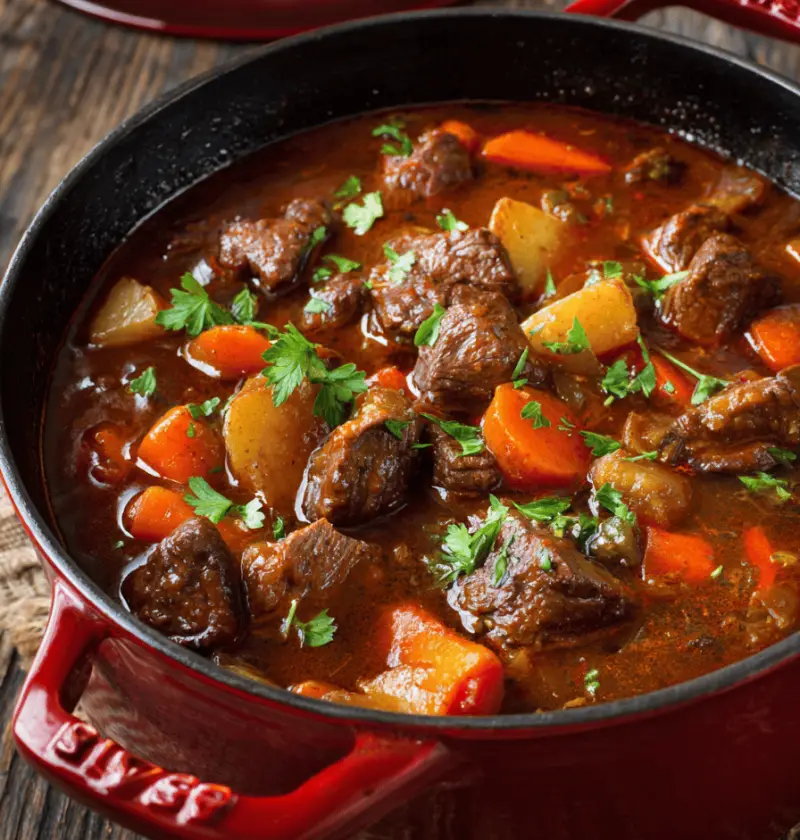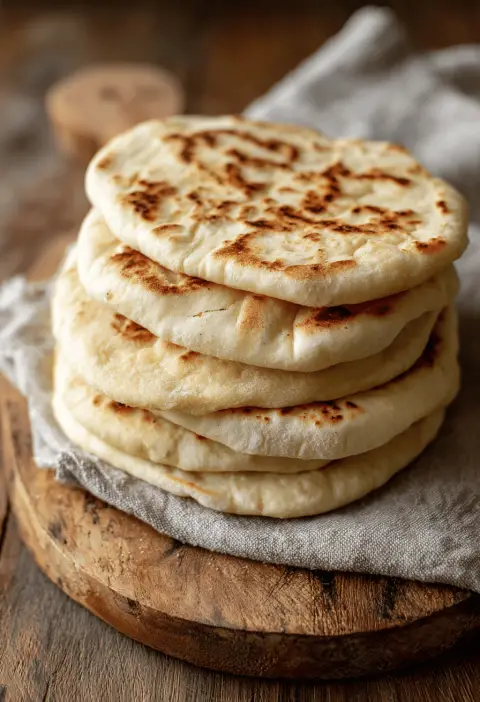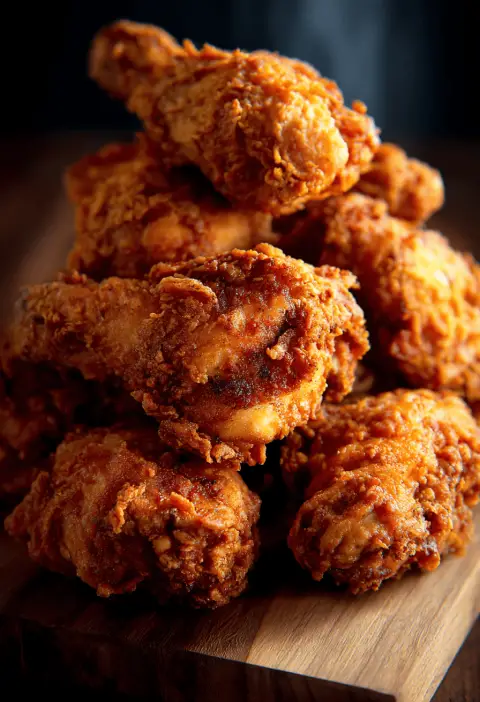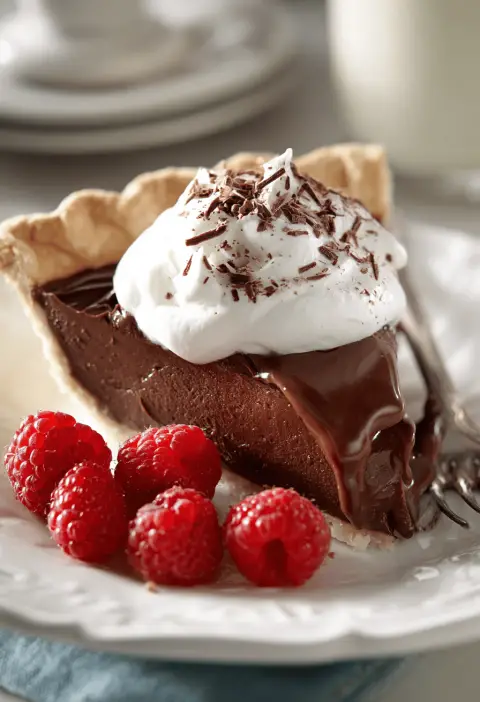Dutch Oven Recipe
A hearty Dutch Oven recipe that turns simple beef, veggies, and herbs into a cozy one-pot meal perfect for those chilly nights.
Full Recipe Introduction
This classic Dutch Oven cooking adventure brings together tender, braised meat and seasonal vegetables in a cast iron pot that locks in warmth and flavor. I first tested this recipe on a crisp November evening, when the air smelled of fallen leaves and hot cider. What makes it special? It’s comfort food at its finest—rich gravy, melt-in-your-mouth beef, and vibrant carrots and onions, all in one pot. With lean chuck roast, fiber-rich veggies, and low-sodium broth, it’s a healthier spin on a family favorite. Plus, stovetop cooking means no oven heating up your kitchen on warm days.
Why You’ll Love This Recipe (H2)
• No oven needed—just your trusted Dutch Oven on the stove
• One-pot meal for easy cleanup (goodbye, mountain of dishes!)
• Perfectly braised meat that practically falls apart
• Cozy comfort food that warms body and soul
• Adaptable for gluten-free or paleo tweaks
• Uses simple pantry staples and fresh produce
• Ideal for weeknight dinners or casual dinner parties
• Great for meal prep—flavors deepen over time
• Cast iron cooking ensures even heat distribution
• Le Creuset or Lodge lovers, this one’s for you
Ingredients (H2)
• 2 lbs beef chuck roast, cut into 1½-inch cubes (grass-fed if possible)
• 2 tbsp olive oil (use a mild extra-virgin brand)
• 1 large yellow onion, diced (for sweetness and depth)
• 3 cloves garlic, minced
• 3 carrots, peeled and chopped into 1-inch pieces
• 2 celery stalks, chopped (aromatic backbone)
• 2 tbsp tomato paste (Heinz or Mutti)
• 1 cup dry red wine (Cabernet or Merlot; can swap for extra broth)
• 4 cups low-sodium beef broth (Kirkland or homemade)
• 2 sprigs fresh rosemary (or 1 tsp dried)
• 2 sprigs fresh thyme (or ½ tsp dried)
• 2 bay leaves
• Salt and pepper, to taste (Kosher salt works best)
• 1 cup frozen peas (added at the end for color and sweetness)
• 1 tbsp cornstarch mixed with 2 tbsp cold water (for thickening, optional)
Directions (H2)
- Heat the oil: Place your cast iron Dutch Oven over medium-high heat. Once the oil shimmers, add half the beef cubes without crowding—sear until deep brown on all sides (about 3 minutes per side). Tip: Brown in batches, so you maintain that lovely crust.
- Sauté aromatics: Remove meat to a plate. Lower heat to medium, add onion, garlic, carrots, and celery. Stir until the onion is translucent and the garlic smells fragrant (about 4 minutes).
- Build flavor: Stir in tomato paste and cook 1 minute, scraping up those golden bits from the bottom—you’ll thank me later.
- Deglaze the pot: Pour in red wine, gently stirring to release any stuck-on bits. Let it bubble for 2–3 minutes so the alcohol cooks off.
- Return meat & herbs: Nestle the seared beef back in, pour in broth until it just covers the meat, then tuck in rosemary, thyme, and bay leaves. Tip: Use fresh herbs for a brighter finish.
- Simmer low and slow: Bring to a gentle simmer, cover, lower heat to medium-low, and cook for 1½–2 hours. You’ll know it’s ready when a fork slides into the beef like butter.
- Thicken (optional): Remove bay leaves and herb sprigs. Stir in peas, then whisk in the cornstarch slurry if you prefer a thicker gravy. Simmer uncovered 5 minutes to meld flavors.
Servings & Timing (H2)
• Yield: Serves 6 hungry adults
• Prep Time: 20 minutes (chopping, searing)
• Cook Time: 2 hours (simmering to tender perfection)
• Total Time: Approximately 2 hours 20 minutes
Variations (H2)
• Swap beef for lamb shoulder and rosemary for mint for a spring twist.
• Use sweet potatoes instead of carrots for a hint of natural sweetness.
• Make it vegetarian: replace meat with portobello mushrooms and red lentils.
• Add a splash of balsamic vinegar at the end for tangy brightness.
• Spice it up with smoked paprika and a pinch of cayenne.
• Try chicken thighs and white wine for a lighter take.
Storage & Reheating (H2)
Store cooled leftovers in an airtight container in the fridge for up to 4 days, or freeze portions for up to 3 months. To reheat, thaw overnight in the fridge, then warm gently on the stovetop over medium heat, stirring occasionally. Make-ahead tip: Prep and freeze the raw veggie-meat mix; thaw in the fridge and cook as directed.
Notes (H2)
• I learned that seasoning in layers—salt the meat, then taste the stew midway—makes a big difference.
• If your gravy tastes flat, a small squeeze of fresh lemon juice brightens it right up.
• For extra silky texture, stir in a pat of cold butter just before serving.
• Using a meat thermometer helps avoid overcooking; aim for 195°F internal for pull-apart beef.
FAQs (H2)
Q: Can I use a slow cooker instead of stovetop Dutch Oven cooking?
A: Yes—sear meat in a skillet first, then transfer everything to a slow cooker on low for 6–8 hours.
Q: What’s the best cut of meat for braising?
A: Beef chuck roast has just the right marbling; brisket works well too.
Q: My sauce is too thin—how do I fix it?
A: Simmer uncovered until it reduces, or whisk in a cornstarch slurry.
Q: Can I swap fresh herbs for dried?
A: Absolutely—use one-third the amount of dried herbs.
Q: Is it okay to skip the wine?
A: Sure—replace with extra broth and a splash of balsamic vinegar for depth.
Q: How do I keep vegetables from turning to mush?
A: Add quick-cooking veggies like peas or bell peppers in the last 10 minutes.
Q: Can I double the recipe for a crowd?
A: Yes—just make sure your Dutch Oven is large enough (at least 7 quarts).
Q: What sides pair well with this dish?
A: Creamy mashed potatoes, crusty bread, or a simple green salad all work beautifully.
Conclusion (H2)
This Dutch Oven recipe delivers cozy, satisfying comfort food with minimal fuss—just sear, simmer, and serve. Whether you’re feeding a crowd or meal-prepping for the week, it’s a one-pot winner that tastes even better the next day. Give it a try, leave a comment below, and don’t forget to explore my Cast Iron Skillet Cornbread and Braised Short Ribs recipes for more hearty inspiration!

Dutch Oven Recipe
Ingredients
- 2 lbs beef chuck roast cut into 1½-inch cubes
- 2 tbsp olive oil use a mild extra-virgin brand
- 1 large yellow onion diced
- 3 cloves garlic minced
- 3 carrots peeled and chopped into 1-inch pieces
- 2 celery stalks chopped
- 2 tbsp tomato paste
- 1 cup dry red wine Cabernet or Merlot; can swap for extra broth
- 4 cups low-sodium beef broth Kirkland or homemade
- 2 sprigs fresh rosemary or 1 tsp dried
- 2 sprigs fresh thyme or ½ tsp dried
- 2 bay leaves
- Salt and pepper to taste
- 1 cup frozen peas added at the end for color and sweetness
- 1 tbsp cornstarch mixed with 2 tbsp cold water for thickening, optional
Instructions
- Place your cast iron Dutch Oven over medium-high heat. Once the oil shimmers, add half the beef cubes without crowding—sear until deep brown on all sides (about 3 minutes per side). Tip: Brown in batches, so you maintain that lovely crust.
- Remove meat to a plate. Lower heat to medium, add onion, garlic, carrots, and celery. Stir until the onion is translucent and the garlic smells fragrant (about 4 minutes).
- Stir in tomato paste and cook 1 minute, scraping up those golden bits from the bottom—you’ll thank me later.
- Pour in red wine, gently stirring to release any stuck-on bits. Let it bubble for 2–3 minutes so the alcohol cooks off.
- Nestle the seared beef back in, pour in broth until it just covers the meat, then tuck in rosemary, thyme, and bay leaves. Tip: Use fresh herbs for a brighter finish.
- Bring to a gentle simmer, cover, lower heat to medium-low, and cook for 1½–2 hours. You’ll know it’s ready when a fork slides into the beef like butter.
- Remove bay leaves and herb sprigs. Stir in peas, then whisk in the cornstarch slurry if you prefer a thicker gravy. Simmer uncovered 5 minutes to meld flavors.







